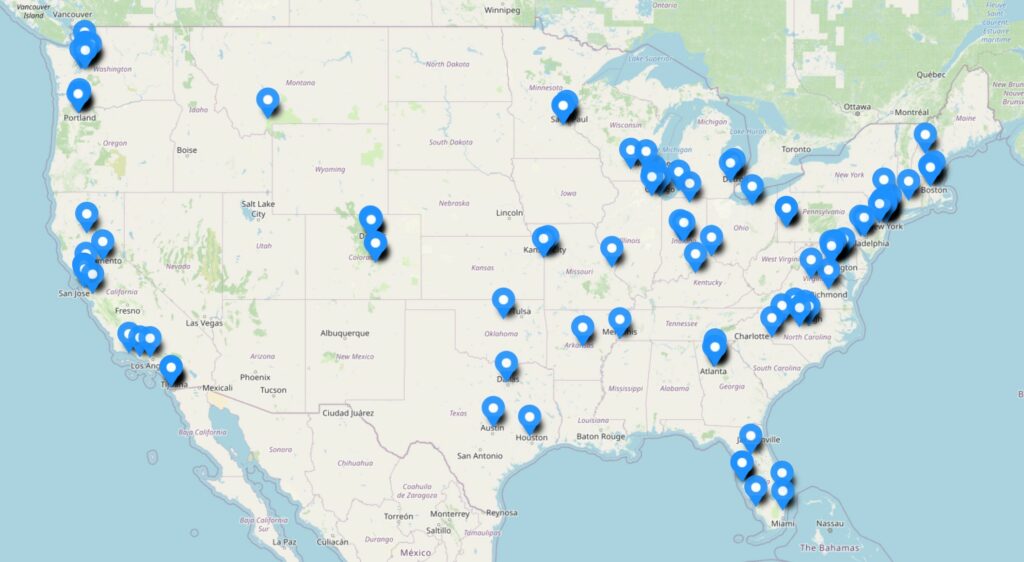Using an Advice-Only advisor isn’t for everyone. Knowing these downsides will help you decide whether it’s the best approach for you.
Geographical Availability
The greatest challenge in finding an Advice-Only advisor is the geographical availability. I once went through 200 advisor profiles and I found only 2 who met the Advice-Only criteria. Another time I couldn’t find a single Advice-Only advisor in an entire state. Living in a large metropolitan area doesn’t necessarily help either. When there are many advisors in the area charging commissions and assets-under-management fees, they can crowd out the Advice-Only advisors.
The Advice-Only Directory currently lists about 100 advisors in 30 states. I’ll add more to the directory as I find them.

You will have more choices if you are more flexible with the distance or you are open to working with an advisor remotely by phone, email, and/or online video calls. If you must work with someone within a short distance, it’s possible that there isn’t one in the directory. In that case, I will refund your fee. So you have nothing to lose.
Time Availability
Because Advice-Only advisors don’t charge asset management fees, they tend to work with more clients than other advisors. Financial planning takes more time than rebalancing investments. As a result, some of them often have a backlog for new clients. When you contact them to schedule your first meeting, they may not be available this week or next week, very much like when new patients have to wait for a doctor’s appointment.
Some Advice-Only advisors are CPAs. They work double time on doing taxes between late January and mid-April. You may have to wait until after the tax season before you can meet them.
Pay Out of Pocket
You have to get over with writing a check to pay the advisor’s fee. Because an Advice-Only advisor doesn’t have power over your investments, you will have to pay them out of pocket as opposed to having the fee deducted from your investments. Human psychology makes this feel more painful than having fees many times larger taken out of your investments, out-of-sight, out-of-mind.
Have the money for the advisor fee available in your checking account if you’d like to work with an Advice-Only advisor.
Solo Practice
While some Advice-Only advisors have partners or employees, most Advice-Only advisors are one-person shops. They don’t have a big national brand behind them. Many don’t have permanent offices. They work out of their homes or they rent offices by the day or by the hour when they meet with clients.
This doesn’t affect the quality of their advice. In fact, Advice-Only advisors tend to be more experienced (see How Qualified Are Advice-Only Financial Advisors?). But if you prefer a big name or a fancy office, Advice-Only isn’t for you.
Follow the Advice
When you work with an advisor who sells you products for a commission or someone who manages your assets for a percentage fee, for better or for worse, they will make sure you actually move your money into whatever they told you to do. When you work with an Advice-Only advisor, they can’t “force” you to follow the advice because they don’t have control over your money. Following through isn’t difficult via the online interface or customer service wherever you have accounts, but if you procrastinate or if you fall into analysis paralysis wanting the perfect at the cost of the good, it’s possible you will sit on the advice and not do anything.
The point of getting advice is to follow the advice. It’s OK to get a second opinion if you are not sure of something. If you have hesitation with some parts of the advice you can raise your concerns with the advisor and have the advisor explain the rationale behind the advice. If you really don’t want to do something, maybe the advisor can suggest alternatives. In any case, simply sitting on the advice and not doing anything defeats the purpose of getting advice.
Be prepared to follow the advice when you work with an Advice-Only advisor.
